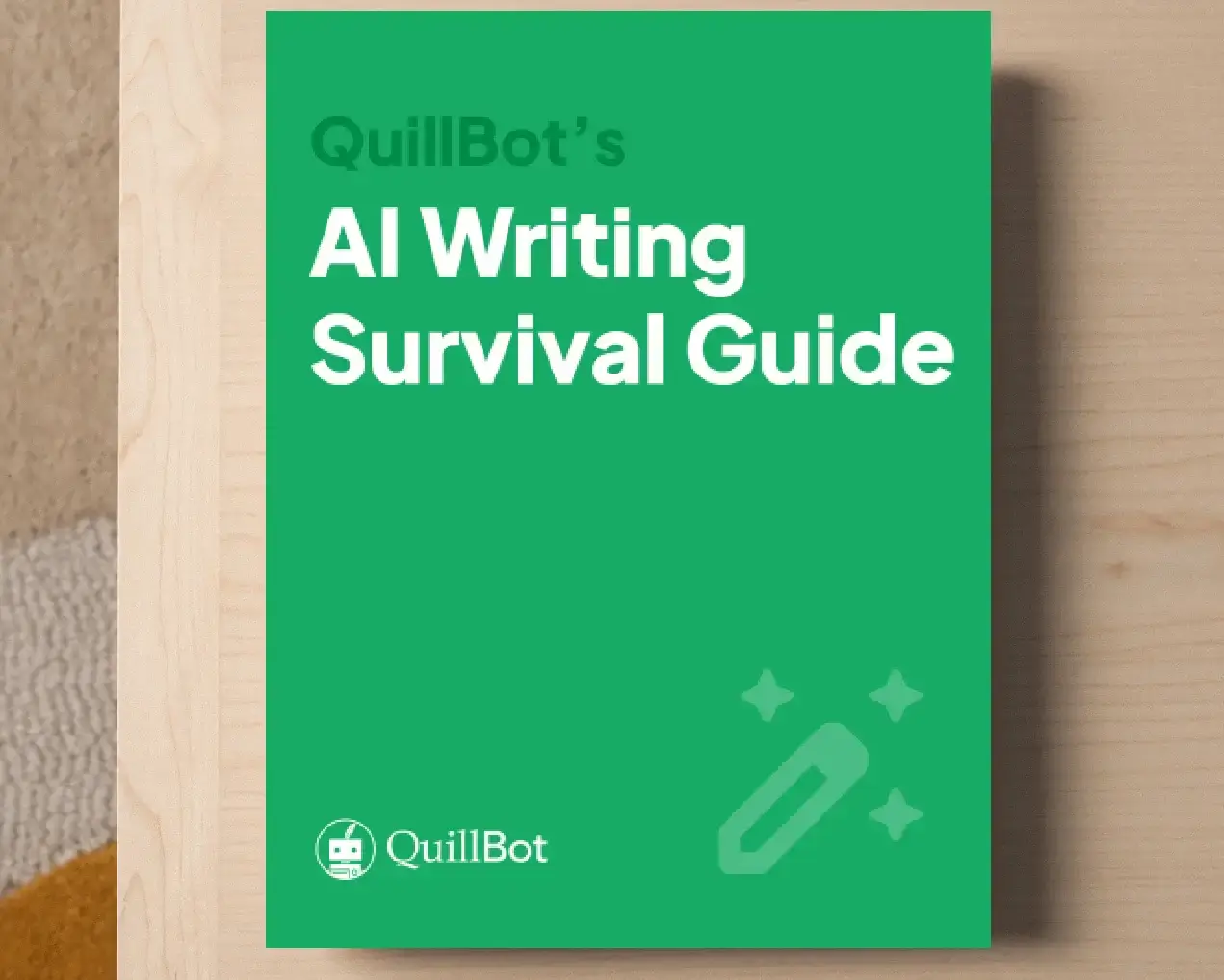How to Rewrite AI-Generated Text | 6 Key Steps
If you’re using AI-generated text as part of your writing process, you’ll know that the output usually needs a bit of editing to ensure it’s accurate, engaging, and stylistically appropriate.
Knowing how to rewrite AI-generated text is about understanding where the AI typically needs some human input and being able to efficiently implement the necessary changes.
To rewrite AI-generated text, you’ll need to:
- Check the content carefully
- Review the terminology and phrasing
- Break up any unnatural repetitive patterns
- Proofread your edits
You can also use an AI Humanizer, like QuillBot’s to humanize AI text. Read on for more specific tips and tricks.
Table of contents
What is AI-generated text?
AI tools like QuillBot’s AI Chat or ChatGPT use generative AI technology to produce the responses to the prompts you give them. The texts they generate are based on predictions of what the next word (or fragment of a word) is likely to be, not facts or phrases fetched from a human-like memory.
These statistical predictions are remarkably authentic, but often need some rewriting to mold them into a polished final product.
Look out for potential issues with:
- Statements with subtle inaccuracies
- Repetitive sentence patterns
- Unnatural word combinations
- Inconsistency of tone
6 key steps to rewrite AI text
These six steps will help you rewrite and refine AI-generated text so it’s accurate, natural, and tailored to your audience and brand.
Step 1: Check the content
Imagine you’ve been asked to write a biography of a classical musician—a text that can be used in the printed programs of the concerts she performs in. Her agent sends you her CV, which contains detailed information about her career, and you use QuillBot’s AI bio generator to write a biography based on it.
You like the AI text, but, on careful reading, you spot that the following aspects need some editing.
- It claims “her career spans over four decades,” but it’s actually five.
- It mentions a conductor who is better known as a composer, which might confuse the average reader
- As well as performing, the musician also teaches, and it says that her “students hold leading positions in major orchestras,” but these are actually “former students.”
- The concluding paragraph claims that “Tonight’s performance offers a rare opportunity” to hear her play. But the text may be used for concerts in locations where she performs regularly.
You’ll typically have to rewrite parts of AI-generated text to fix subtle inaccuracies and potentially confusing statements like these.
Step 2: Vary overused structures
AI-generated texts can follow formulaic patterns that give them a mechanical quality. Examples of repetitive features you’ll need to fix with a few edits include:
- Paragraphs and sentences that are very similar in length
- Excessive repetition of topic-related keywords
- Unnecessary repetition of the same ideas or information
- Overuse of particular structures, such as sentences with additional information within em dashes (e.g., “Her discography—encompassing over 50 recordings—has garnered accolades including …”)
Step 3: Check the terminology
When you’re reading through the AI output, keep an eye out for words and phrases that are too technical or specialized for your audience or context.
Returning to our classical musician example, the AI has described her as “also a pedagogue,” so you decide to rewrite this as “also a teacher.” And it’s used the German term “Konzertexamen” to describe a university degree she completed in Germany, so you reformulate this to “postgraduate performance degree.”
Step 4: Refine the tone
Prompts that get the best results often include descriptions of:
- A persona (e.g., “You are a copywriter who specializes in classical music”)
- Voice (e.g., “informative,” “factual”)
- Tone (e.g., “professional and respectful,” “using language suitable for a classical music enthusiast rather than an academic”)
Even with a well-crafted prompt, you’ll still need to work on the phrasing so it matches your specific text type or your client’s brand voice.
For instance, “She has graced the stages of leading international festivals” might feel too promotional for a concert program, so you could change it to, “She has appeared at leading international festivals.” Similarly, you might decide to remove generic, clichéd descriptions of her playing, such as “expressive depth, technical brilliance, and stylistic sensitivity.”
Step 5: Run it through a humanizer
Tools like QuillBot’s free AI Humanizer will help you to rewrite your AI-generated texts. It will suggest alternatives to words and phrases you think sound out of place as well as edits to make it sound more natural.

Original sentence: Utilizing data-driven insights can improve decision-making and optimize business strategies.
Humanized sentence: Using insights based on data can help you make better decisions and improve your business strategies.
You’re happy with the humanized output because the tool has replaced jargon-y words (“utilizing,” “optimize”) with more casual alternatives. It has also added “you” and “your” to make the content more personal.
Try using a humanizer at different points in your workflow. For example, you can:
- Run the raw AI-generated output through it at the beginning of the process and work from that
- Use it at intermediate stages to help you come up with alternative phrasing
- Apply it at the end to help make the final refinements
Step 6: Proofread
AI-generated text is very accurate when it comes to grammar, spelling, and punctuation. But with every edit you make, there’s a chance of introducing a typo—so it’s still important to proofread carefully before you hit “publish” or send the text to a client.
And don’t forget, you can use AI tools like QuillBot’s free Grammar Checker to help with this step too.
Cite this Quillbot article
We encourage the use of reliable sources in all types of writing. You can copy and paste the citation or click the "Cite this article" button to automatically add it to our free Citation Generator.
QuillBot. (2025, September 02). How to Rewrite AI-Generated Text | 6 Key Steps. Quillbot. Retrieved October 27, 2025, from https://quillbot.com/blog/ai-writing-tools/how-to-rewrite-ai-generated-text/

